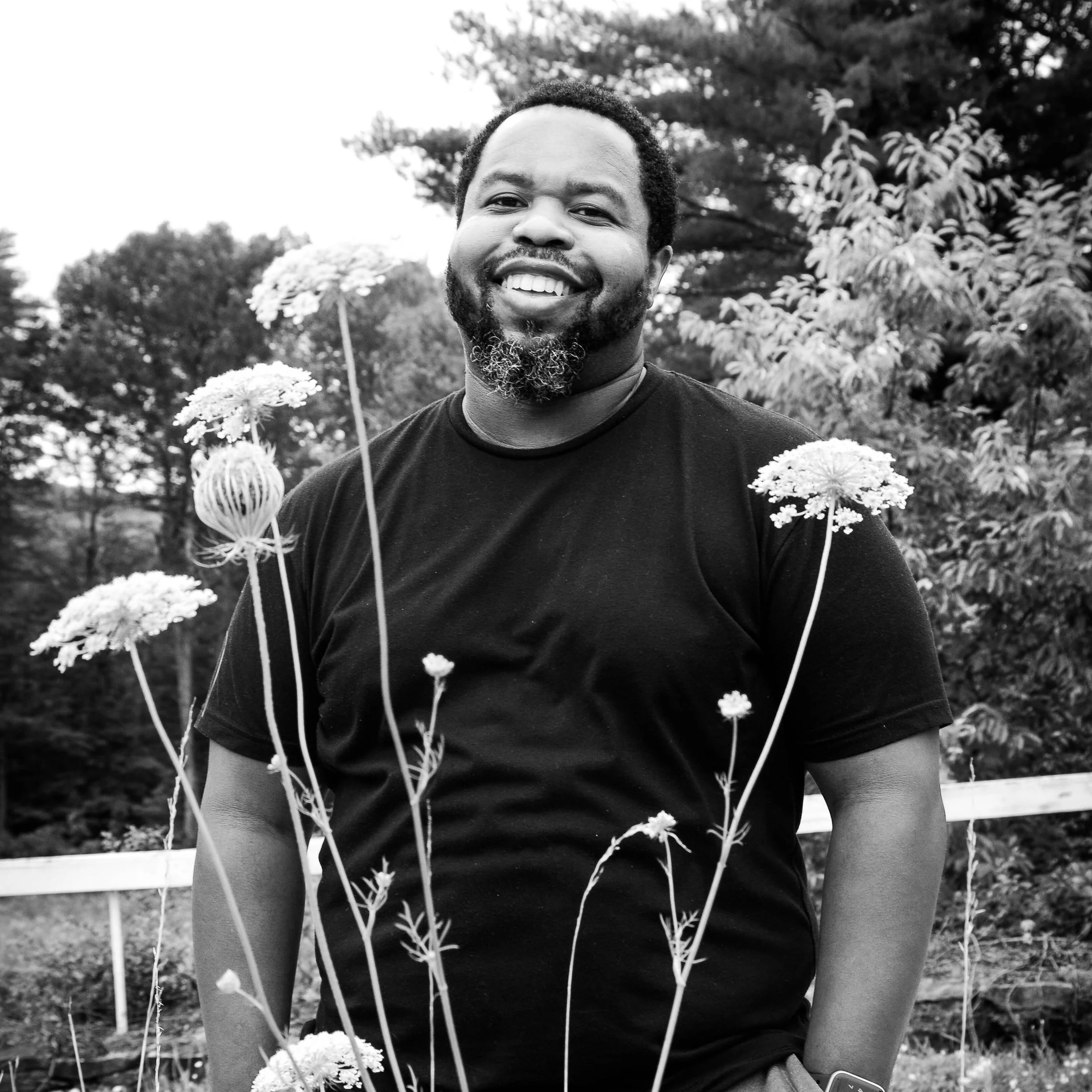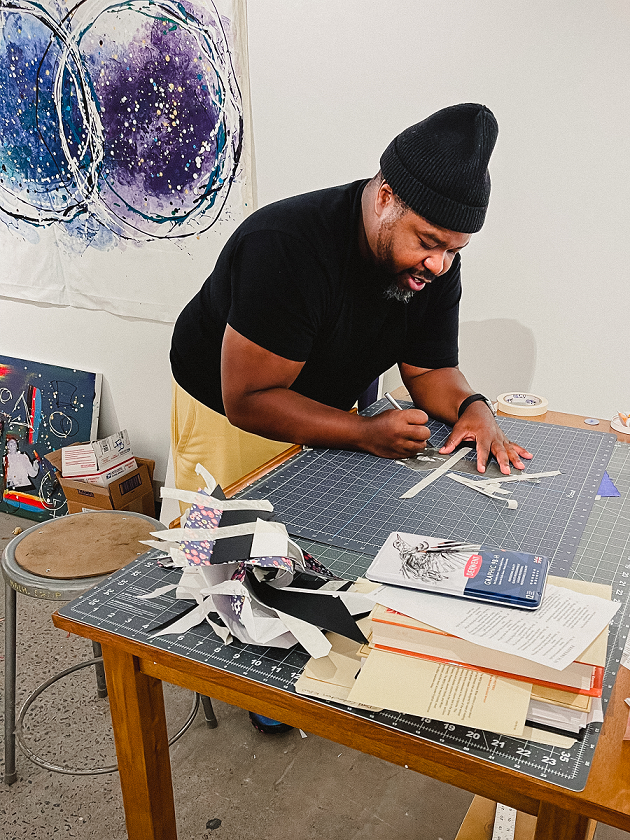
Benita Mayo, "Ashon I", 2021, Archival pigment print, 25.5 x 17.5 inches
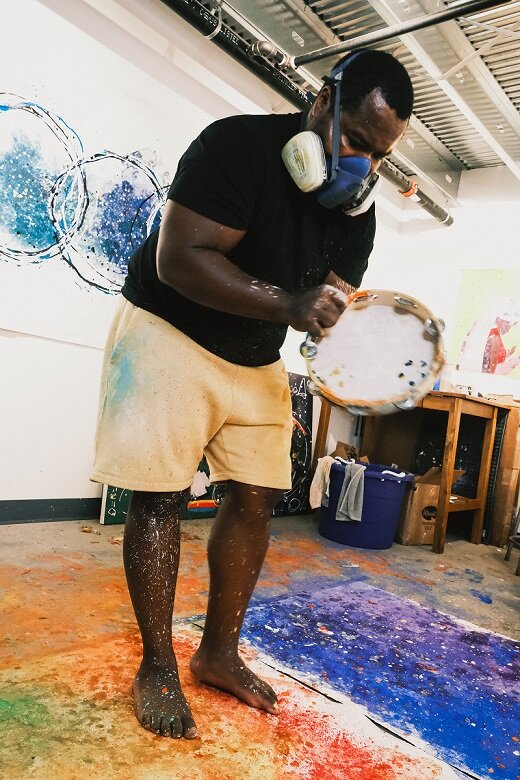
Benita Mayo, "Shouting I", 2021, Archival pigment print, 25.5 x 17.5 inches

Benita Mayo, "I am Beautiful", 2021, Archival pigment print, 25.5 x 17.5 inches

Benita Mayo, "Ashon II", 2021, Archival pigment print, 15.5 x 15.5 inches
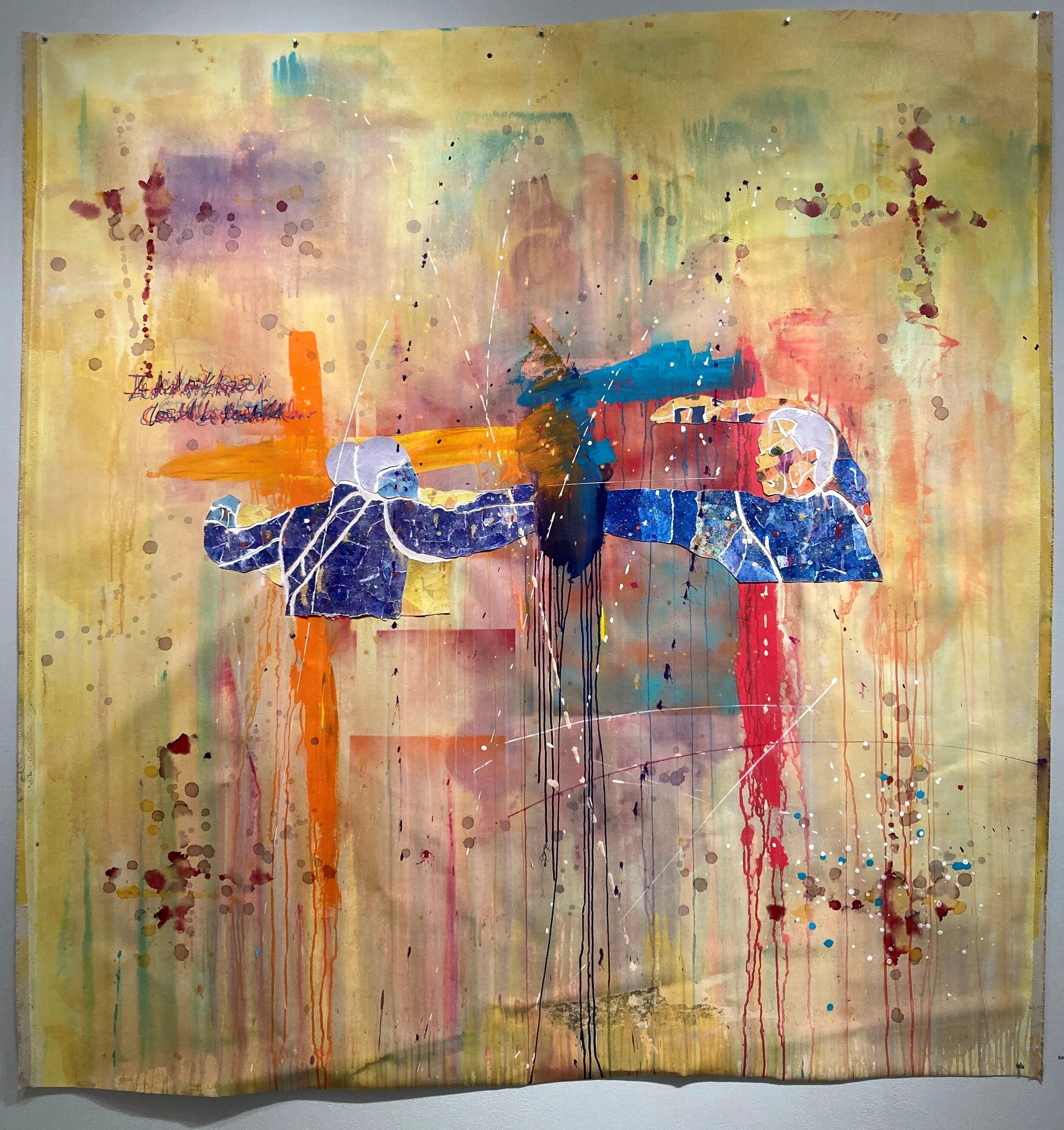
Ashon Crawley, "i did not know i could be beautiful (number 8)", 2021, Mixed media : acrylic paint, acrylic markers, alcohol ink, oil paint, spray paint, pigment powder, decorative paper, and digital print on canvas, 73 x 72 inches

Close-up of Ashon Crawley's "i did not know i could be beautiful (number 8)"

Close-up of Ashon Crawley's "i did not know i could be beautiful (number 8)"

Close-up of Ashon Crawley's "i did not know i could be beautiful (number 8)"

Benita Mayo, "Ashon III", 2021, Archival pigment print, 17.5 x 25.5 inches
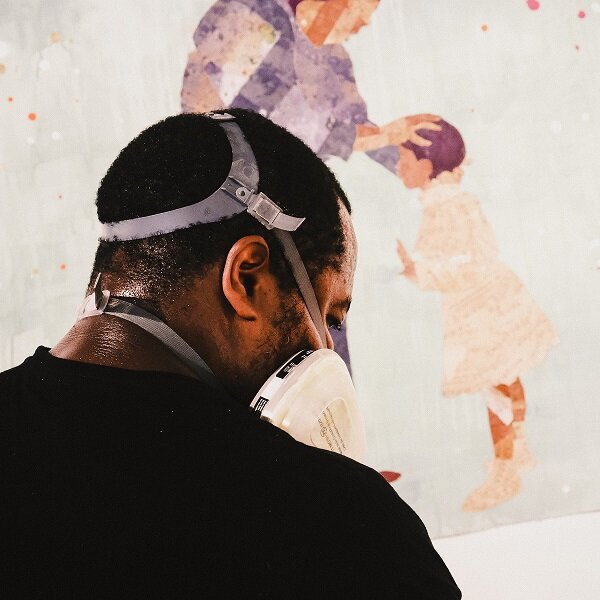
Benita Mayo, "Shouting II", 2021, Archival pigment print, 15.5 x 15.5 inches

Benita Mayo, "Shouting III", 2021, Archival pigment print, 17.5 x 25.5 inches
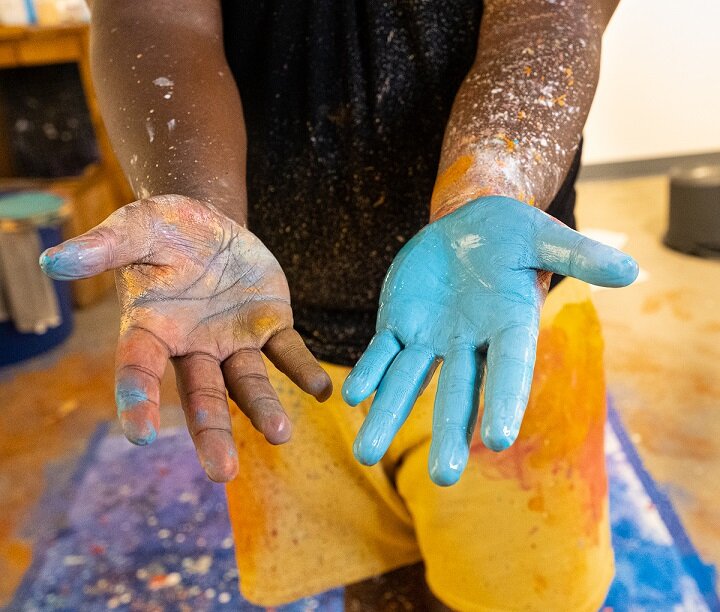
Benita Mayo, "Painted Hands", 2021, Archival pigment print, 15.5 x 15.5 inches
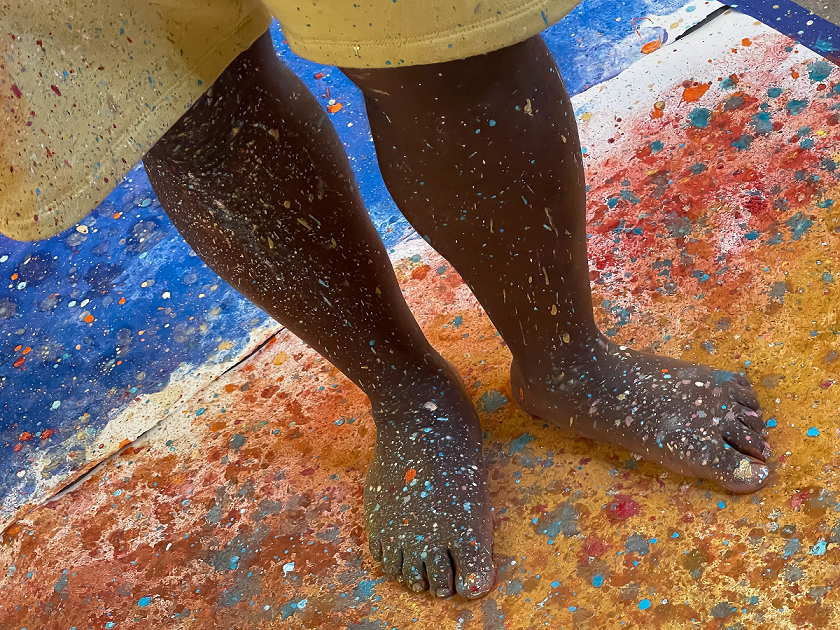
Benita Mayo, "Painted Feet", 2021, Archival pigment print, 17.5 x 21.5 inches
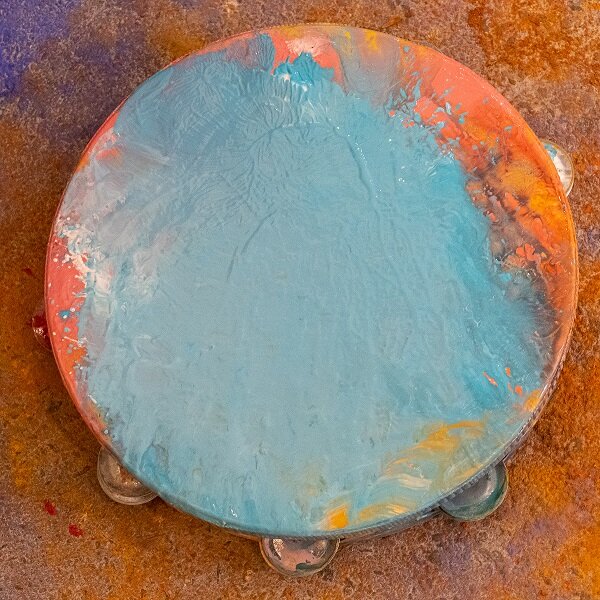
Benita Mayo, "Splattered Tambourine", 2021, Archival pigment print, 15.5 x 15.5 inches
“What is the labor required to make worlds? This is the question my art practice—audiovisual, painting, sound, film, writing—attempts to think with. To ask the question of the labor it takes to make worlds—a kind of labor that can be used in, but also sometimes against the political economy— is to think about affect, physicality, materiality, texture, weight, spirit, flesh. Whether writing, or art practice, what is the work?
How do my practices work on me, how do they produce what poet Fred Moten calls a dispossessive force such that I am infused, changed, by that which I am creating? Such that the question of labor, too, is about who and what is being created, made, fashioned: is the work making me as I make things? And how do the things made with my hands, feet, voice, work on those that encounter them? And how does this labor break down the distinction between the maker and made, creator and created, subject and object? The labor to make worlds is performance.
My practice is an interdisciplinary approach to audio, visual, and choreographic methods. I use choreography to create mystical paintings, dancing—what Blackpentecostals call “shouting”—on paper or canvas with pigment powder, clapping my hands with paint, letting it splatter on surfaces, sometimes singing, based on the rhythms of the Blackpentecostal Church. I use paint, ink, canvas, paper, and other surfaces to visualize that which remains after my body moves to the sound of the praise music, to more fully consider residue, lingering, that escapes capture. My art practice lets me think about the ways the religious as a conceptual domain and field of thought has sequestered, and in sequestering not holding with care, particular kinds of meditative, transformative, collective modes of existence, reflection, behavior. With audiovisual practices, I have occasion to think about hiddenness, about the practice of composing and constructing, of putting ideas and concepts and colors and sounds together, taking them apart.
For SSG, I use multiple methods to create the pieces: I shout on paper with pigment powder, acrylic paint, ink and I play the tambourine with paint on my hands to let it splatter on the paper’s surface. After a period of varnishing, I rip the paper up to use them as pieces in the silhouette. The silhouettes in this series are of black worshippers in various religious traditions, primarily Christian and Muslim. But I also include silhouettes of blackqueer people in the ballroom scene, dancing, voguing, in sharp and hyperbolic fleshly gestures. Taking the torn shouting pieces and combining them with decorative paper, tissue paper, dyed hymns, I remake the image otherwise than the original, trying to discover beauty as critique, critique and critical engagement as beautiful. This is a reiterative process because with each new silhouette painting created, I make a print of it, tear up the print and use the print in subsequent pieces. The point is to take what was given and to repurpose it, to take what was made and to use it to make beautiful things over and over again. Like taking the Blackpentecostal praise of my youth and ripping it up, critically engaging it, and putting it together anew.”
- Ashon Crawley
ABOUT THE ARTISTS
ASHON CRAWLEY
Ashon Crawley is Associate Professor of Religious Studies and African American Studies at the University of Virginia and author of Blackpentecostal Breath: The Aesthetics of Possibility (Fordham University Press), winner of the 2019 Judy Tsou Critical Race Studies Award from the American Musicological Society; and The Lonely Letters (Duke University Press). He is also an audiovisual, choreosonic artist, combining sound, visual and digital art to expand the domain of the possible. All his work is about alternatives to normative function and form, the practice of otherwise possibility.
www.ashoncrawley.com | @ashoncrawleyart
BENITA MAYO
Benita Mayo is a native of Virginia and holds a BA degree from UVA. She is a sister, auntie, daughter, friend, visual storyteller, yoga teacher and fine art photographer. She is an introvert who is often mistaken for an extrovert. Mayo is introspective, enjoys time for musing and reflection, and relationships underpin everything she does. She has a passion to inspire others and to honor their basic goodness that dwells within in all of us.
www.benitamayo.smugmug.com | @benita.mayo


